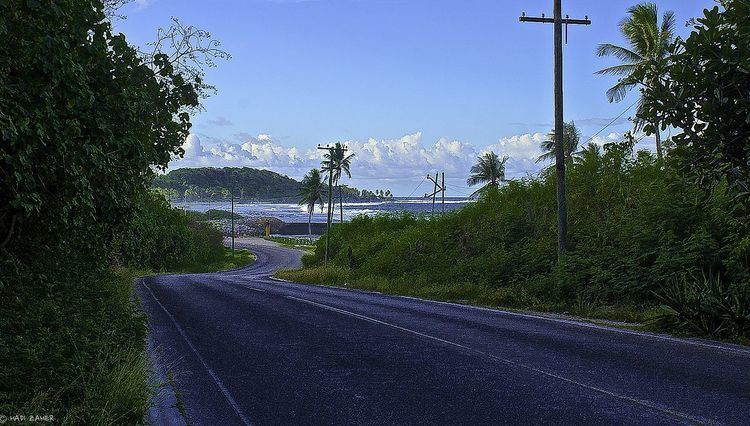 | ||
The displacement of the traditional culture of Nauru by contemporary western influences is very clearly visible on the island. Only little remains preserved from the old customs. The traditions of arts and crafts are lost nearly completely.
Contents
Arts and crafts
The inhabitants of Nauru wear the usual tropical clothes: short trousers and light shirts. Fishing still follows a traditional method: the island anglers wait in small light boats for fish to arrive. The custom of fishing by trained frigatebirds has been preserved.
Radio Nauru has collected numerous recordings of local people's music. But even old Nauruans can rarely understand the contents of these songs.
Whilst the traditional culture rapidly gives way to the contemporary, as elsewhere in Micronesia, music and dance still rank among the most popular art forms. Rhythmic singing and traditional reigen are performed particularly at celebrations and craftsmen make articles of clothing and fans of Kokosfasern and the sheets of the screw tree and use geometrical samples, which resemble those of the Indonesian culture. Also the wood of the kokospalme is used for the production of arts and crafts.
Language and education
The language of Nauru, Dorerin Naoero, is a Micronesian language. English is understood and spoken widely.
Education is compulsory from 4 to 16, in all the schools on the island. The University of the South Pacific has a centre in Nauru located in the Aiwo District and offers pre-school teacher education, nutrition and disability studies and will offer the Community Workers Certificate. The campus offers Audio and video conferencing facilities, library and computer laboratory as well as internet and email access via USPNet are available for students. For secondary and university education, most Nauruans' children must go abroad. During its prosperous years these children were sent to Australia but now were sent to Fiji.
The official national holiday is the independence day on 31 January, but Angam Day, 26 October, is considered as an additional national holiday.
The Nauruan words of the national anthem were written by Margaret Hendrie and adopted in 1968 upon the Republic of Nauru's independence.
Sport
The most popular in Nauru is Australian rules football. A 12-team senior league operates in the country, see Australian rules football in Nauru and it is a popular spectator sport. Nauru has competed internationally in Australian rules football at the Arafura Games, Australian Football International Cup and Barassi International Youth Tournament. The national team, the "Chiefs", ranked 8th in the International Cup in 2002 and gold medal at the Arafura Games.
Nauruans also play soccer, softball, tennis, sailing, swimming and golf. There are only a few sport grounds in Nauru. The only stadium is in Yaren, but it is obsolete and fails to meet international standards. A larger and more modern sports stadium is being built in Meneng, however lack of money has caused the project to stall. The current stadia are:
A traditional 'sport' is catching birds when they return from foraging at sea to the island towards sunset. The men then stand on the beach ready to throw their lasso. The Nauruan lasso is supple rope with a weight at the end. When a bird comes over they throw their lasso up, it hits and or drapes itself over the bird, which then falls down and is seized and are roosted as pets.
Weightlifting is one of the more traditional sports in Nauru.
